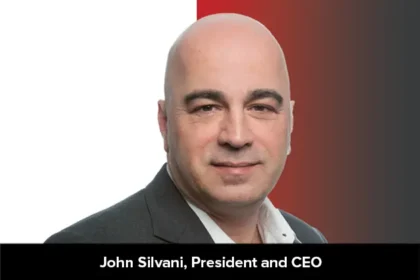Launching a new business is an exercise in building something from nothing. This is especially true in the digital realm. You’ve crafted the perfect product, designed a sleek website, and are ready to announce your arrival on social media platforms like YouTube and Instagram. You hit “publish” and wait for the world to take notice. The result? Silence. This is the “empty room” problem, a frustratingly common hurdle for startups and new ventures where brilliant content goes unseen, creating a digital echo chamber. Overcoming this initial inertia is not just a marketing task; it’s a critical business objective for establishing credibility and generating momentum.
Building Your Organic Foundation: The Non-Negotiables
Before diving into specific tactics, it’s crucial to understand the powerful psychological principle at play: social proof. Think of it in the physical world. Are you more likely to enter a bustling restaurant or the empty one next door? Most people choose the former, assuming the crowd signals quality. Social media algorithms and human users operate on a similar bias. Content that already has likes, comments, and views is perceived as more valuable and is more likely to be recommended to others. Breaking through this initial barrier is the key to unlocking organic, exponential growth.
While the desire for rapid growth is understandable, a solid organic strategy is the bedrock of sustainable success. Rushing this stage is like building a skyscraper on a weak foundation. It’s the long-term work that ensures any accelerated growth has something to stick to.
Define Your Niche and Value Proposition
The most common mistake is trying to appeal to everyone. Before you create a single post, you must have a clear answer to two questions: Who is your ideal customer, and what unique problem do you solve for them? A tightly defined niche allows you to create highly relevant content that resonates deeply with a specific audience. This focus makes you a big fish in a small pond, which is far more effective than being an invisible fish in the ocean of general content.
Content as a Cornerstone
Your content is your currency on social media. It must be consistently valuable, insightful, or entertaining for your target audience. This means moving beyond simple product announcements. Create content that educates, solves a pain point, or offers a unique perspective. For example, a B2B software company could create YouTube tutorials that solve common industry challenges, positioning themselves as experts rather than just vendors. Some brands choose to buy YouTube views as a helpful way to increase early visibility, but it is still important to have high-quality, problem-solving content that attracts an audience genuinely interested in the brand.
Strategic Acceleration: When and How to Catalyze Growth
Organic growth is essential, but it can be painfully slow. For businesses operating in competitive markets or needing to make an impact quickly to attract investors or first customers, waiting months for the algorithm to take notice is not a viable option. This is where strategic acceleration comes into play, methods designed to “prime the pump” and signal to both the platform and potential followers that your content is worth watching.
This can involve a multi-pronged approach, from targeted social media advertising to influencer collaborations. The goal is to create an initial wave of engagement that the platform’s algorithm can then amplify. Studies on social psychology suggest that content with pre-existing engagement can see a higher organic interaction rate, as new viewers are more inclined to trust what’s already popular. For platforms like YouTube, this initial momentum is crucial, which is why many new brands explore services that boost initial video views to overcome the algorithm’s initial cold shoulder and establish credibility.
The key is to view these tactics not as a replacement for quality content, but as a catalyst that gives your excellent content the initial visibility it deserves. Leveraging social proof is one of the most reliable ways to influence user behavior and build trust quickly.
Measuring What Matters: From Vanity Metrics to Business Impact
Gaining traction is one thing; ensuring it translates to business results is another entirely. It’s easy to get caught up in “vanity metrics” like follower counts and likes. While these numbers indicate reach, they don’t tell the whole story. A truly successful social media strategy must be tied to core business objectives.
Instead of focusing solely on views, analyze metrics that signal deeper engagement and business impact. Are viewers clicking the link in your bio to visit your website? What is the watch time on your YouTube videos? Are comments showing genuine interest or purchase intent? Track metrics like click-through rates (CTR), lead generation from social channels, and ultimately, conversion rates. By connecting your social media efforts to tangible outcomes, you can effectively measure your return on investment and make data-driven decisions to refine your strategy over time.
FAQs
Is it better to focus on one social media platform or be on all of them?
For a new business with limited resources, it is almost always more effective to master one or two platforms where your target audience is most active. Trying to be everywhere at once dilutes your efforts and leads to mediocre content across the board.
How long does it typically take to see organic traction on a new social media account?
There is no magic number, as it depends heavily on the industry, content quality, and consistency. However, it’s realistic to expect a period of 3-6 months of consistent, high-quality posting before seeing significant organic momentum.
What’s the biggest mistake new businesses make when trying to grow their social media presence?
The most common mistake is inconsistency. Many businesses start with a burst of enthusiasm, posting daily, only to trail off when they don’t see immediate results. Social media algorithms reward consistency.
Can accelerated growth strategies harm my brand’s reputation?
Like any tool, the impact depends on how it’s used. If accelerated growth is used to amplify low-quality, spammy, or misleading content, it will undoubtedly harm your reputation.










